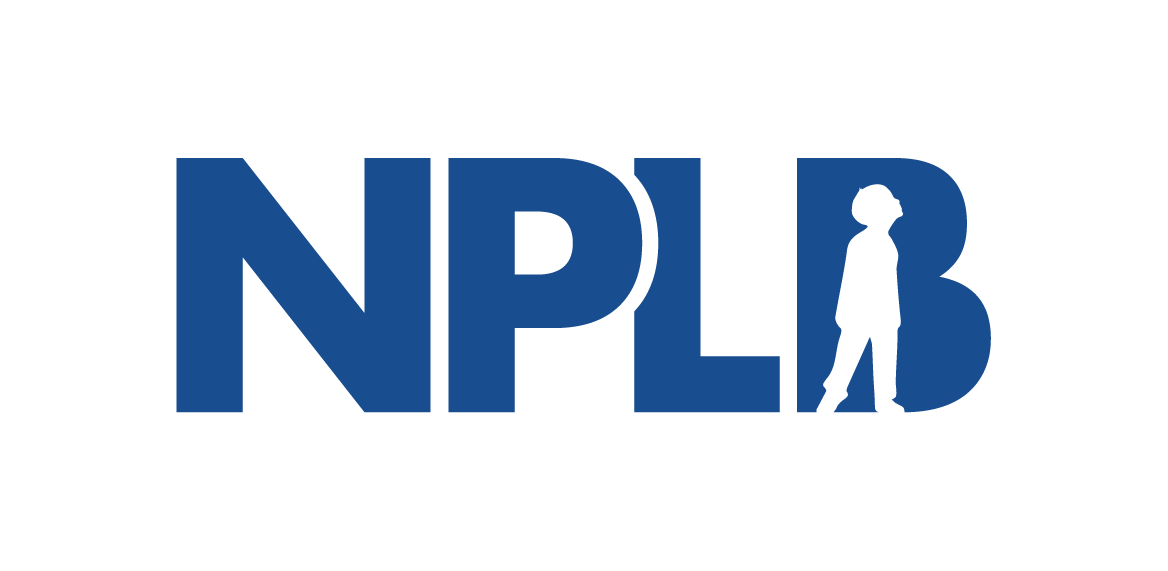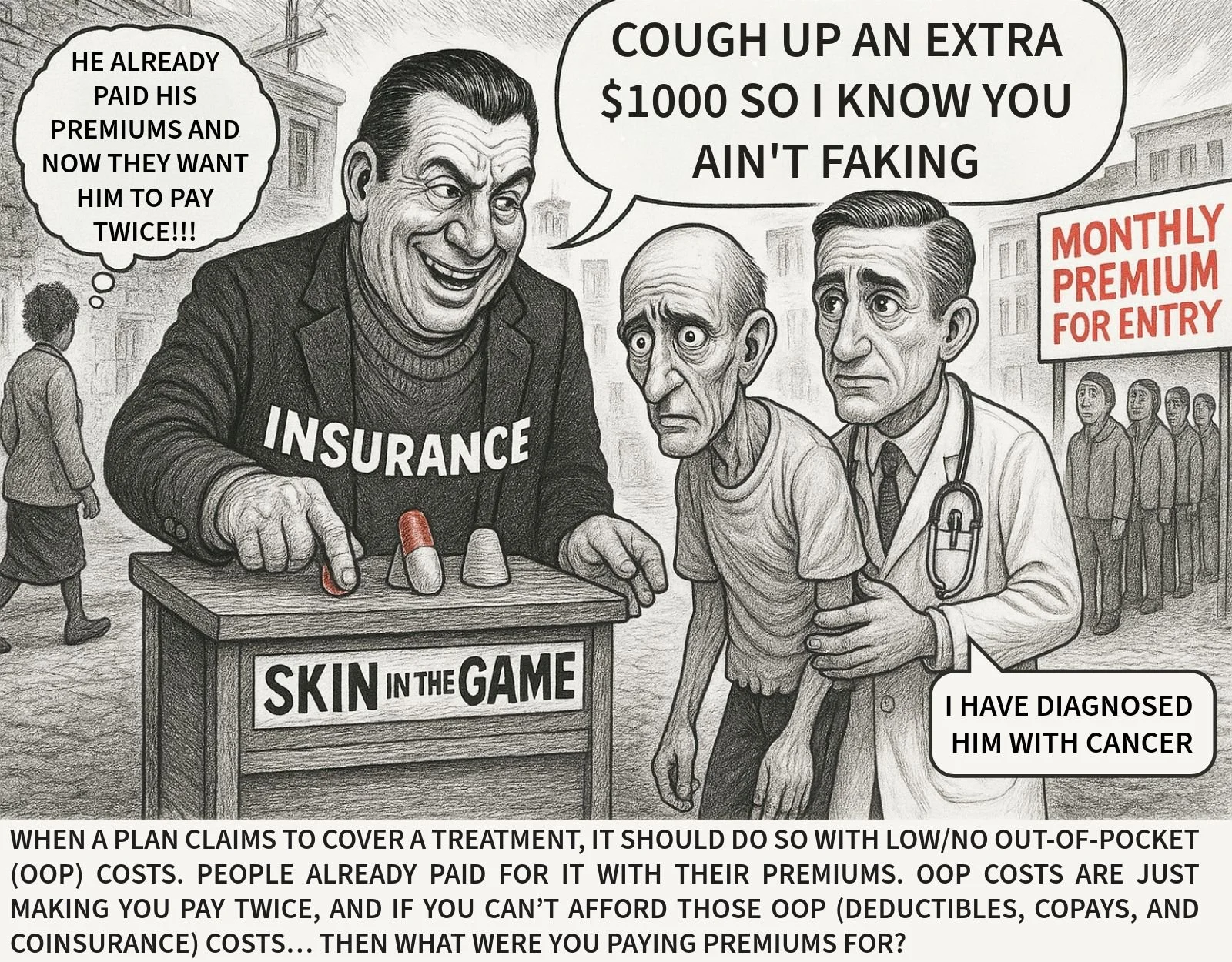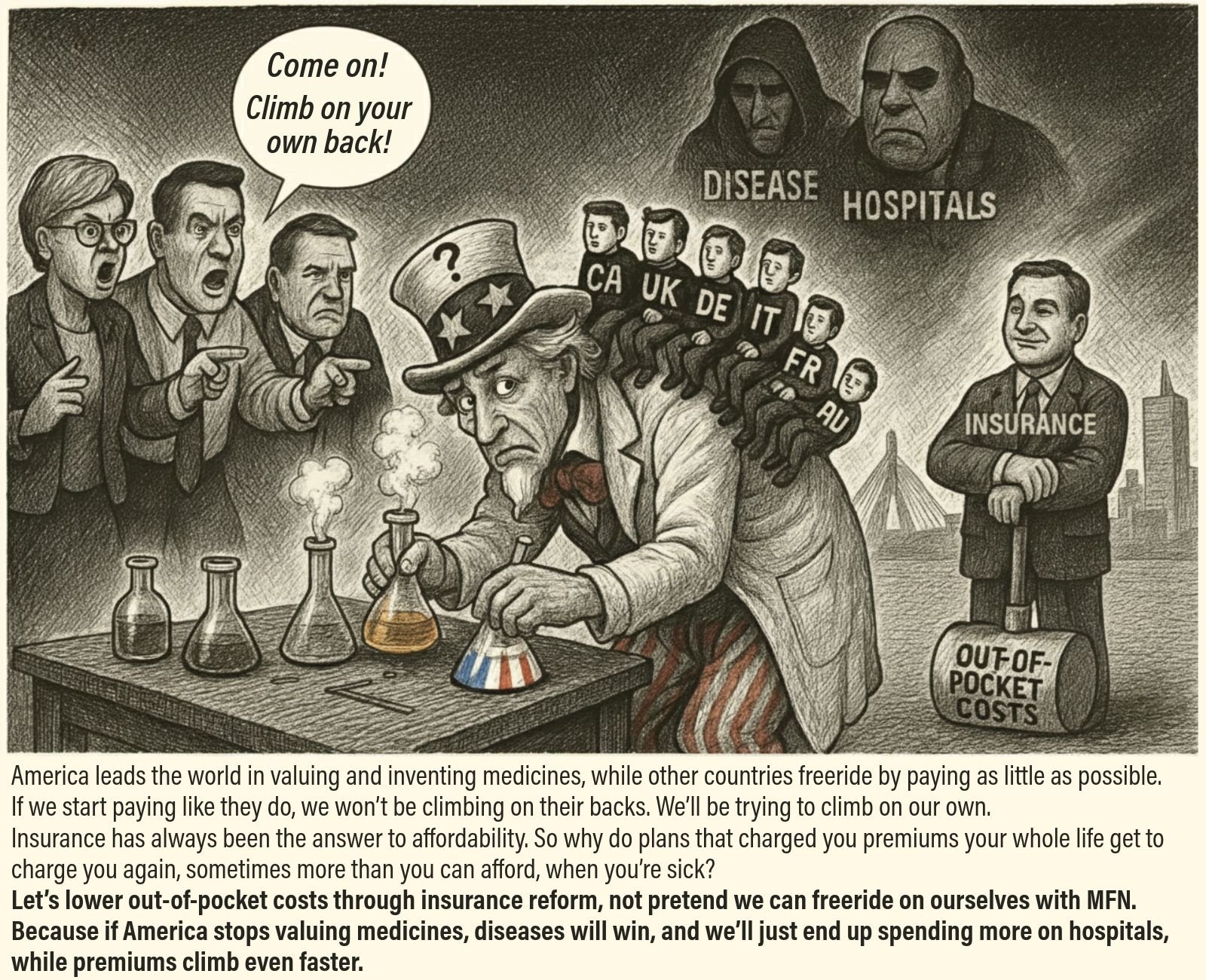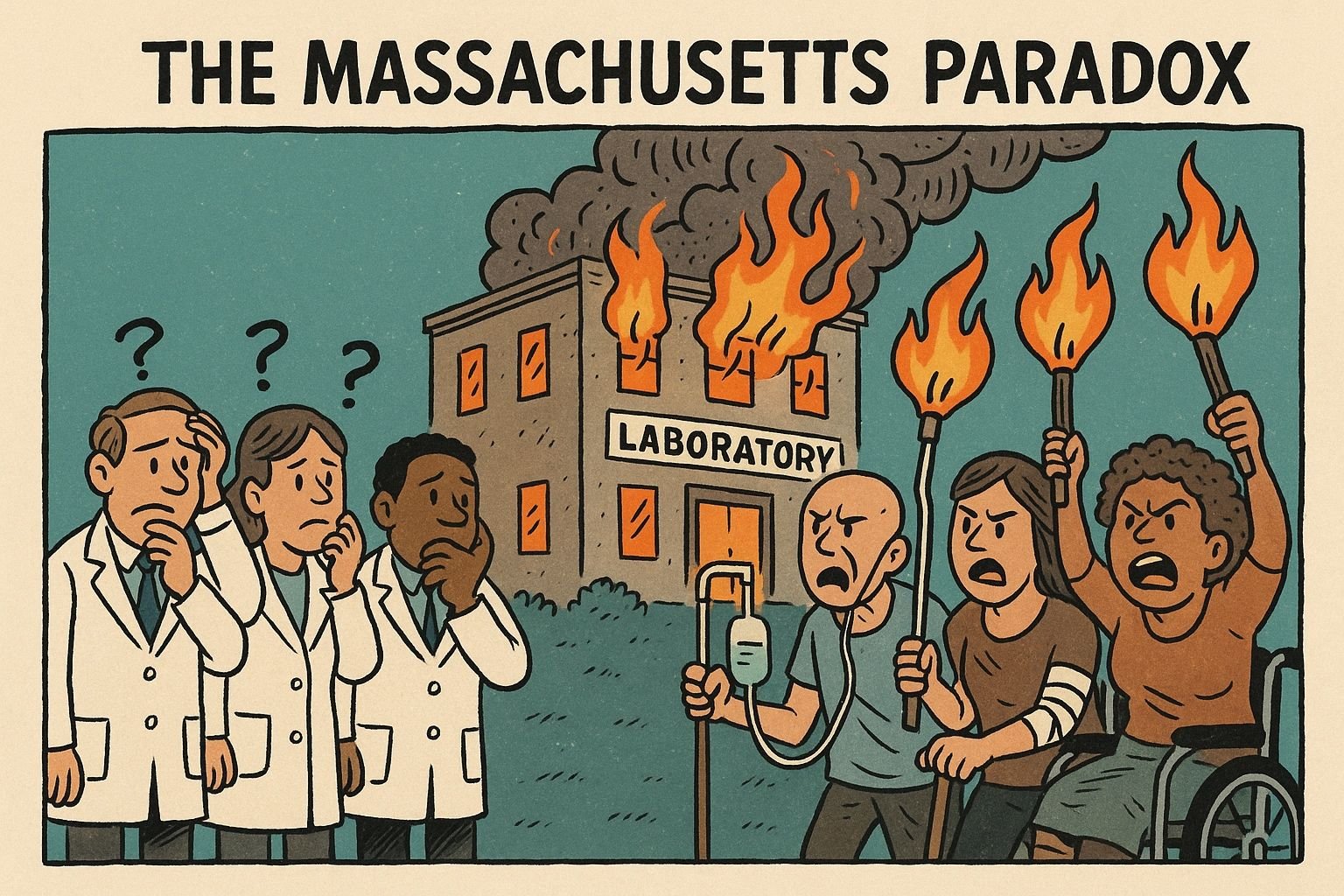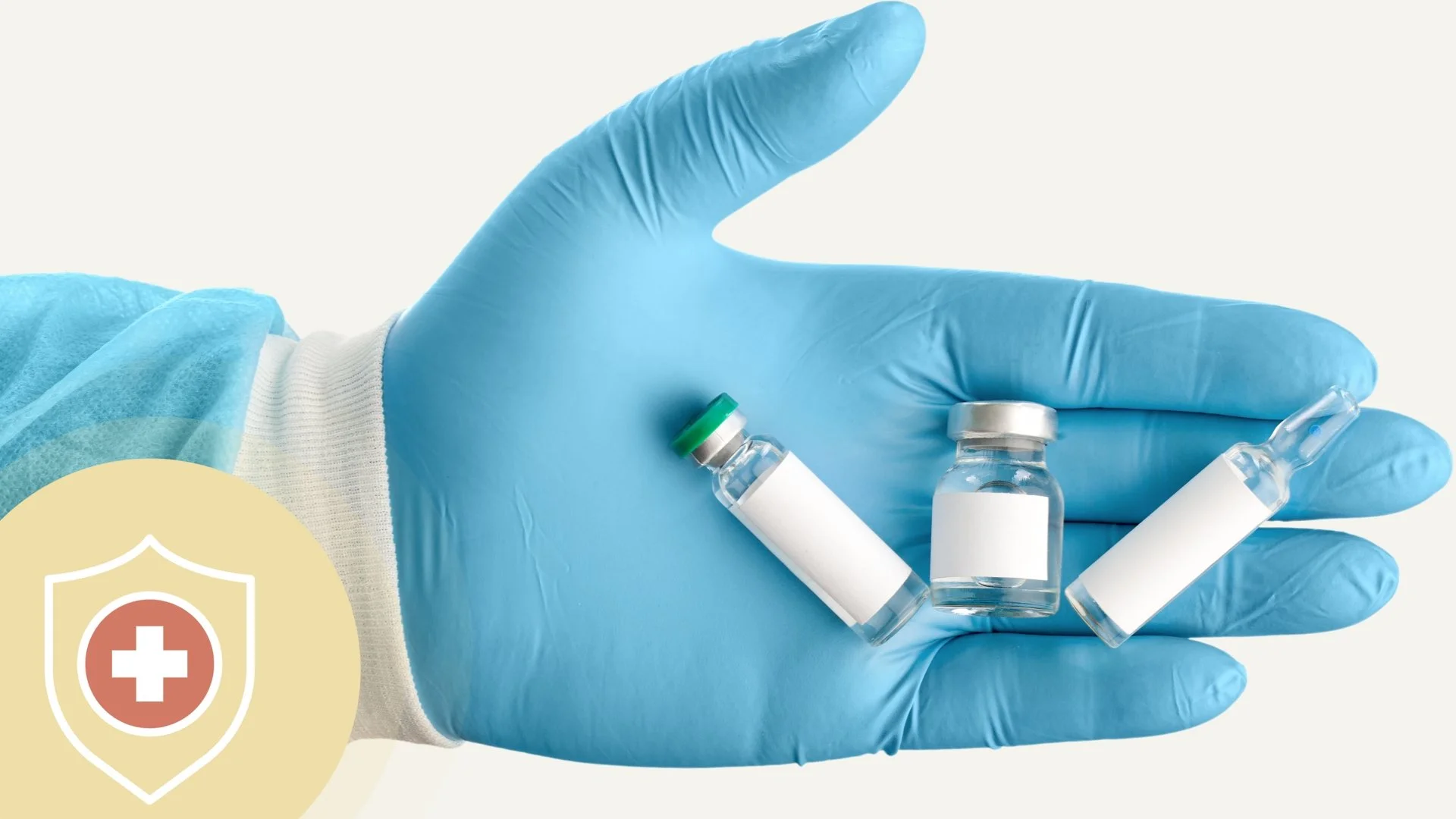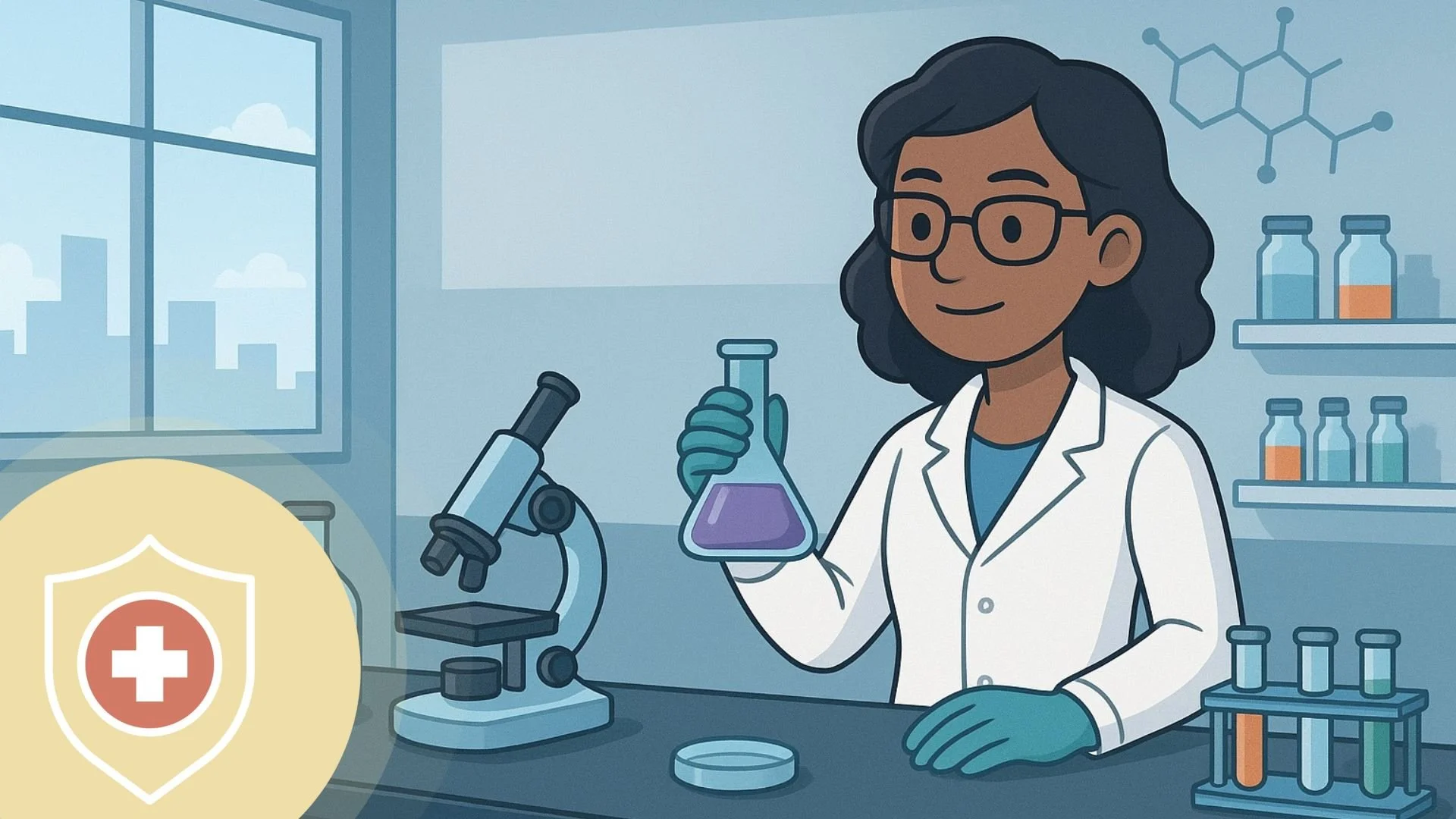Supporting the Call for Evidence-Based Policy and Public Health Security
As we indicated in our November 20th letter, No Patient Left Behind (NPLB)'s coalition of biotech investors, innovators, researchers, physicians, and patient advocates is deeply concerned about the direction of the FDA. We further wish to highlight and emphasize the issues raised in the December 3, 2025 Perspective published in the New England Journal of Medicine by twelve FDA commissioner predecessors.
Skin in the Game: An Insurance Shame
This cartoon illustrates the absurdity of requiring “skin in the game” for life-saving, prescribed medications.
Vaccines Make Me Nervous, But You Make Me Safe
This cartoon simplifies the conversation on vaccines by reminding us of the obvious truth—vaccines are much better than the diseases they prevent.
Massachusetts, 2035
This cartoon forces us to imagine a scenario where we let biotech innovation come to a grinding halt.
Direct-To-Consumer Drug Ads Don’t Prescribe Medicine
This cartoon explains the real rationale behind direct-to-consumer advertising for prescription drugs.
Measles Isn’t Just a Childhood Rash
This cartoon serves as a stark reminder that measles is not just a childhood rash and should not be treated as such.
No One Fakes Cancer for Free Chemo
This cartoon exposes the truth. No one would fake cancer for free chemo, yet real patients can’t afford it. The satire forces discomfort where it belongs—with those who have the power to fix a broken system.
The Global Free-Ride
This cartoon personifies global free-riding on American tax-funded biopharmaceutical innovation.
I Don’t Trust Shots, But I Trust You
This cartoon flips the usual debate about vaccines. You don’t need to know everything about vaccines to know one thing for sure: measles kills.
The Massachusetts Paradox
This cartoon tells the story of the MA Paradox—where patients turn against the very industry working to develop life-saving treatments.
The Home Mortgage Analogy
This cartoon depicts the home mortgage analogy for drug innovation and the global free-ride on Americans funding the system.
The Firefighter Copay
This cartoon compares chemo copays to firefighter copays, showcasing the absurdity of paying drug copays after paying premiums.
A Letter to FDA Commissioner Marty Makary on the Importance of a Strong and Predictable FDA
US biotech innovators and investors value FDA prioritizing the recruitment and retention of clinical, scientific and regulatory specialists who offer innovators the benefit of experienced, case-specific guidance and problem-solving. This institutional expertise is especially important to small, early-stage, and pre-commercial US biopharma entrepreneurs, who account for the majority of new drug and biologic applications submitted to the FDA.
Call the Inventors - Iteration 2
My doctor says I need this. I’ve been paying my premiums. I don’t understand the problem.
Call the Inventors - Iteration 1
So your insurance company decided they know medicine better than your actual doctor?
Fixing Insurance Gaps: A Roadmap for Improving ACA Health Plan Coverage
This Issue Brief presents new data showing that, despite increased federal subsidies and enrollment since 2022, many ACA exchange plans have raised OOP drug costs—undermining the law’s core promise of affordable care.
Public Comment: Accelerate Safe and Effective Drug Access, PDUFA III
Our modern world needs a modern FDA with the capacity to accelerate access to safe, effective treatments while sustaining U.S. leadership in biotechnology. PDUFA VIII offers a historic opportunity to make the drug review program faster, more consistent, and more transparent by prioritizing core review activities, modernizing processes, strengthening accountability, and embracing patient-centered science.
